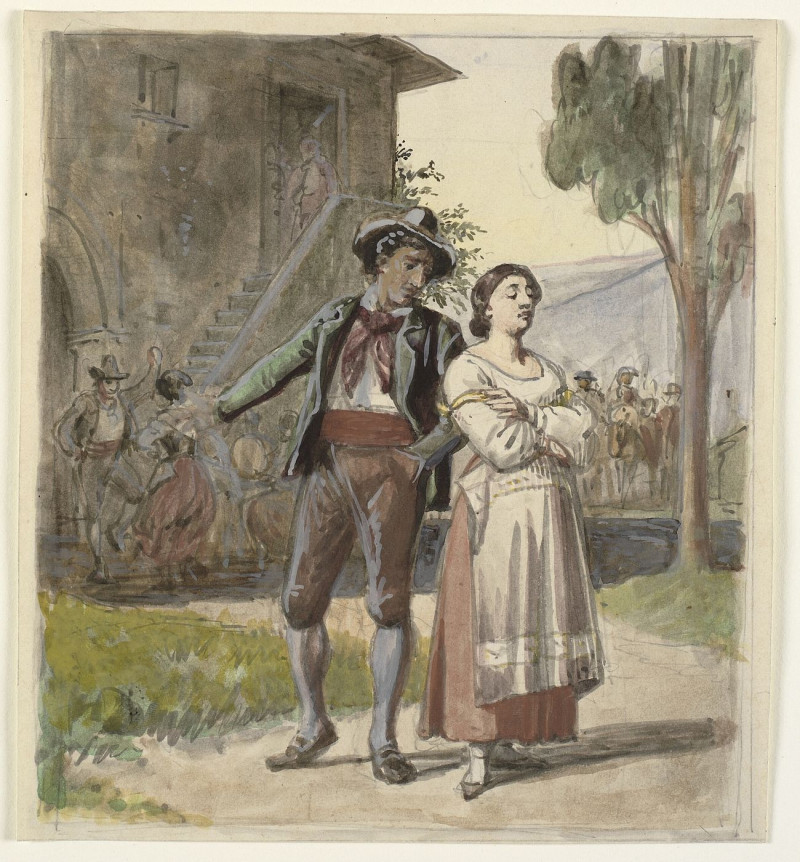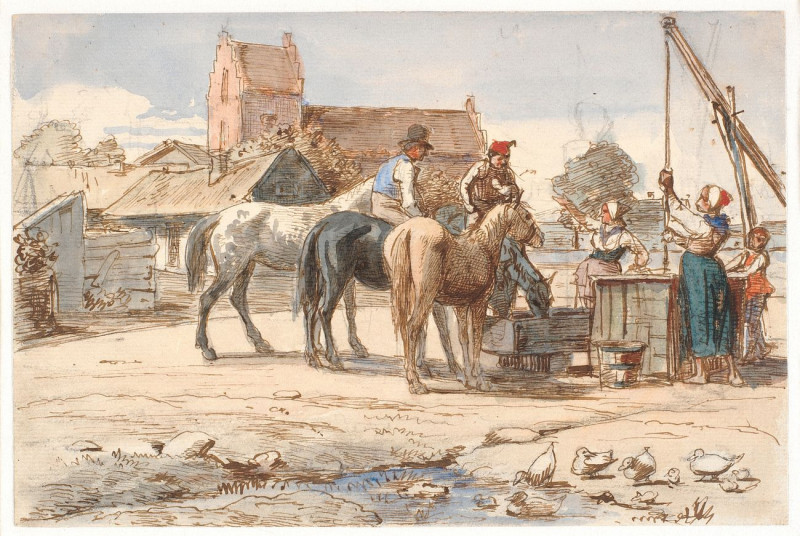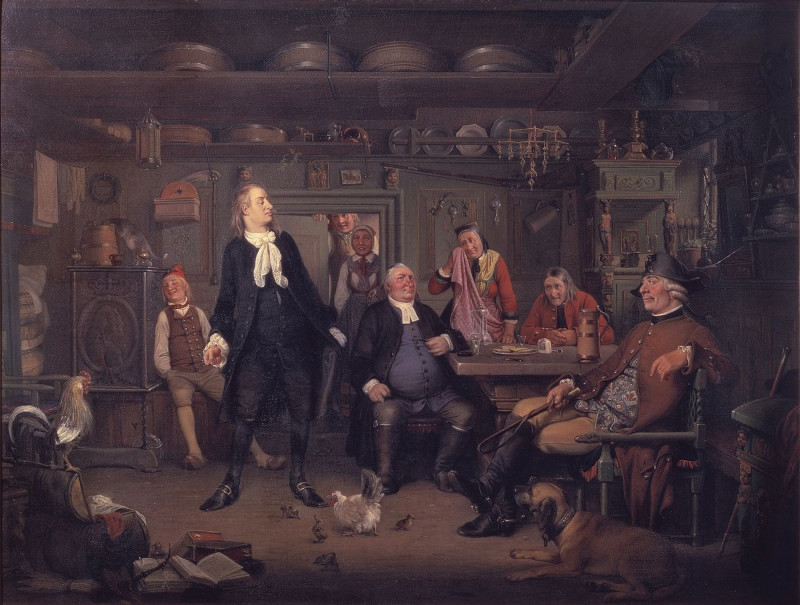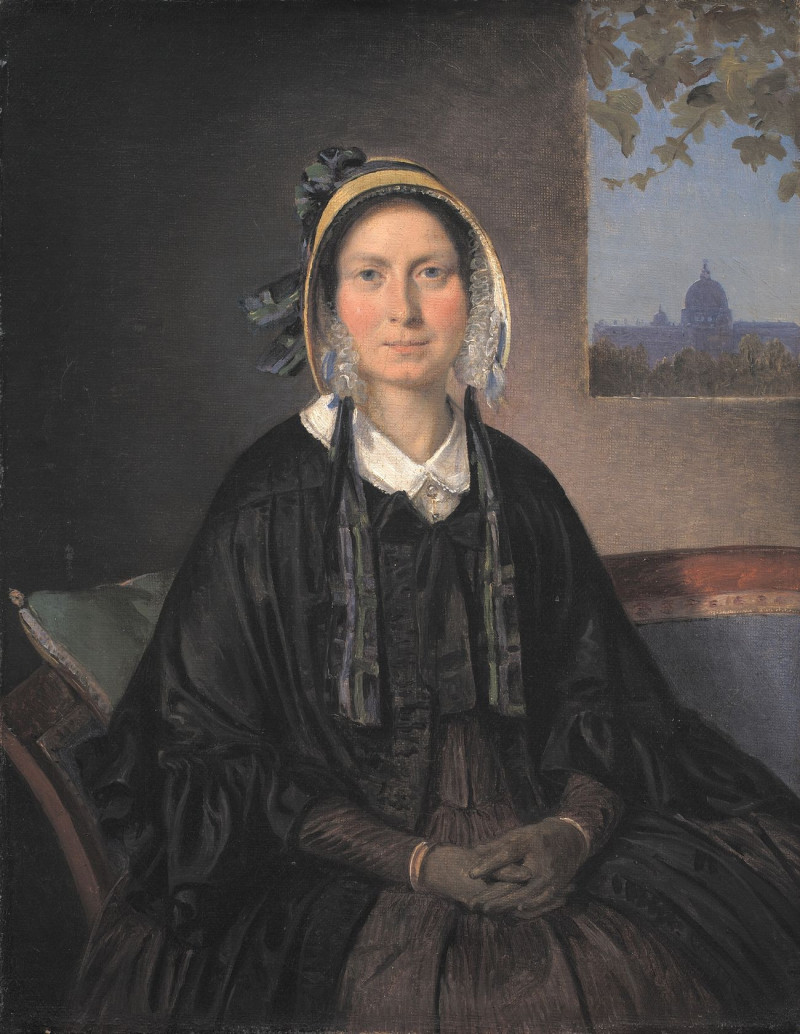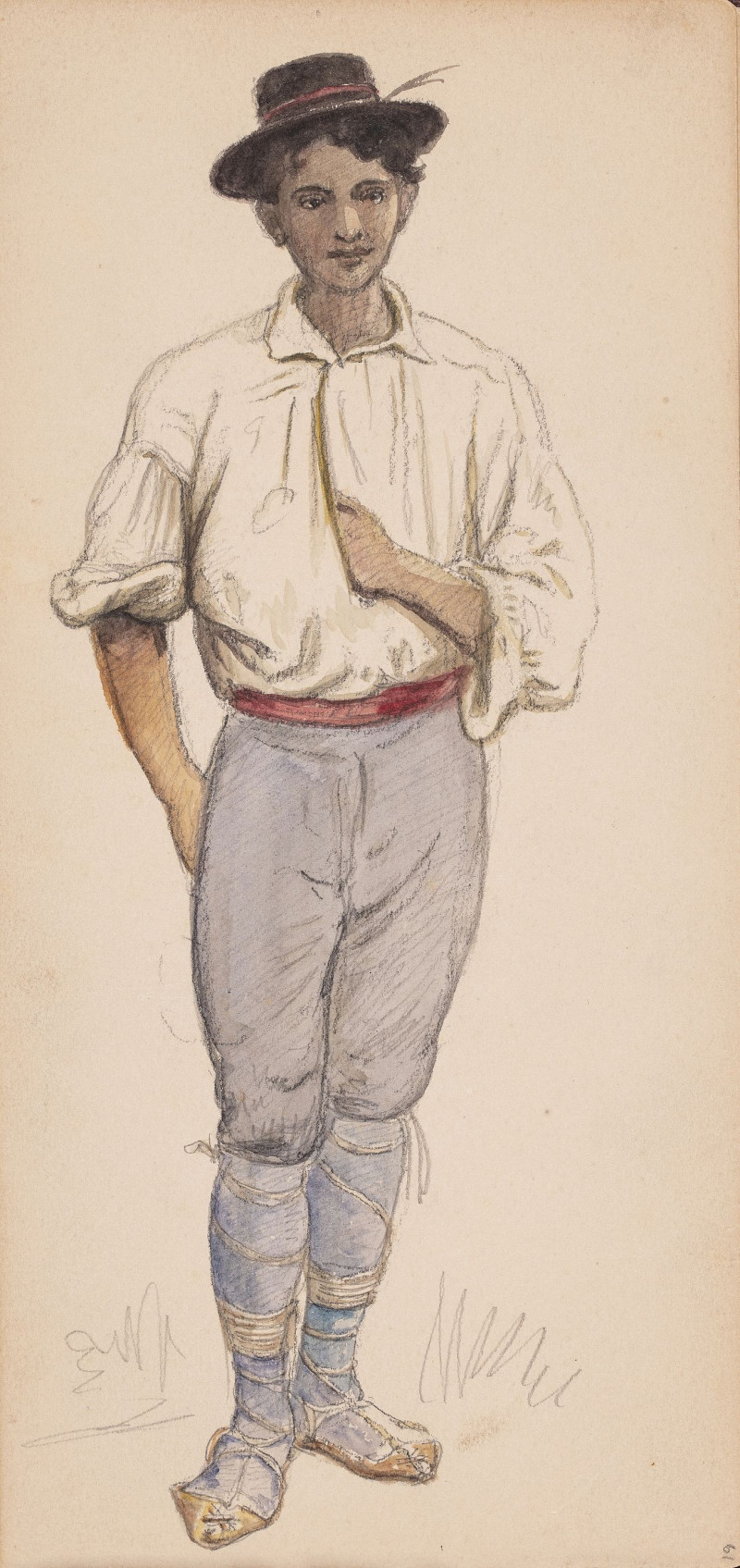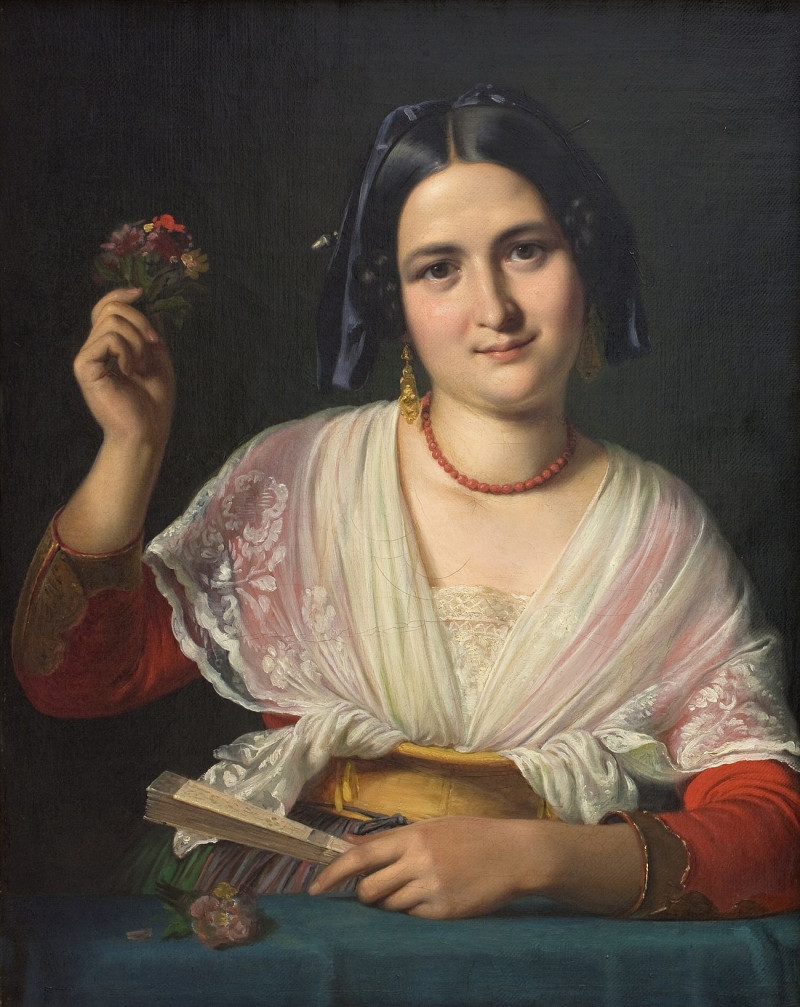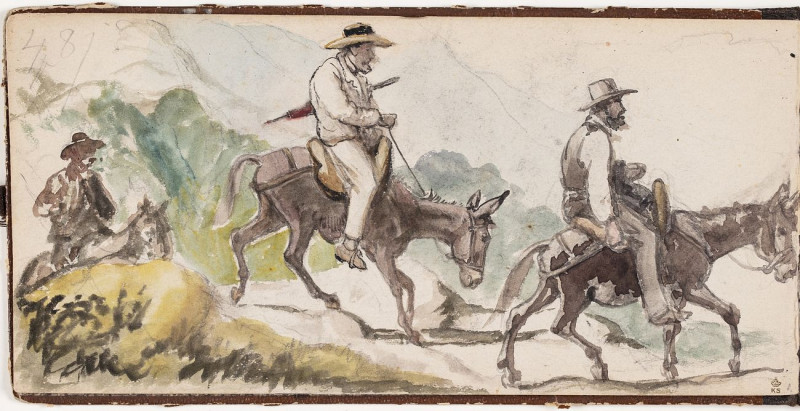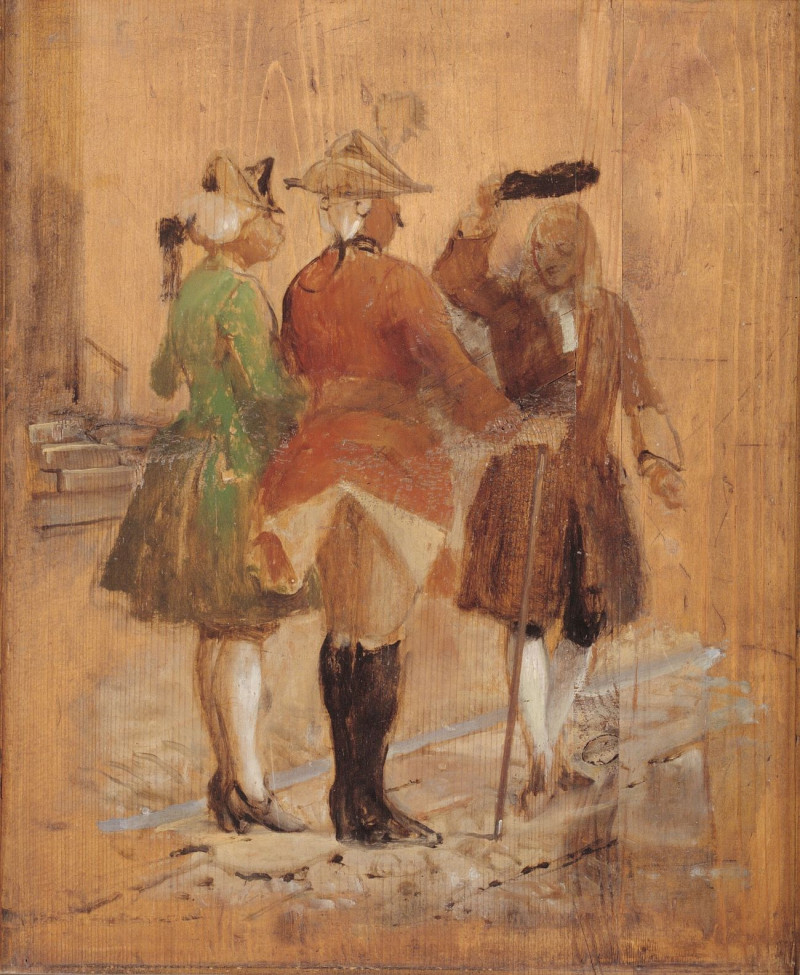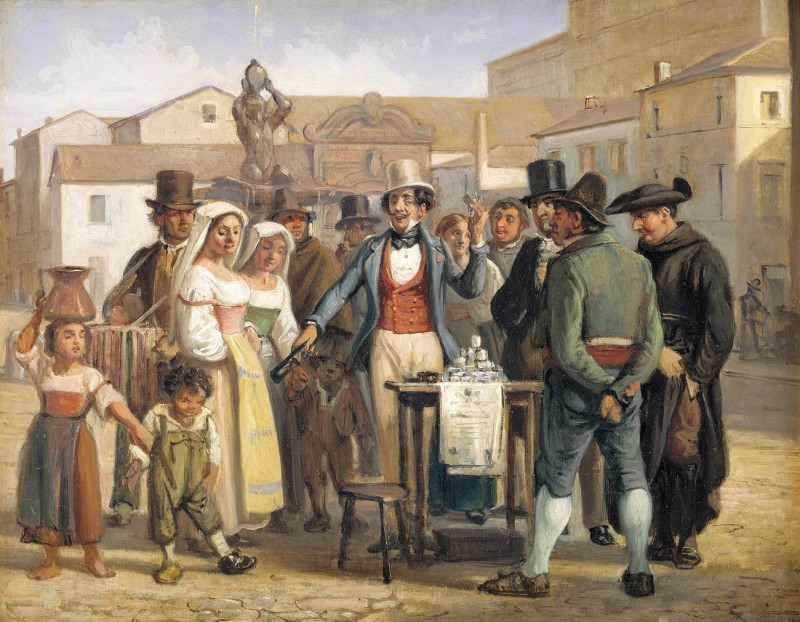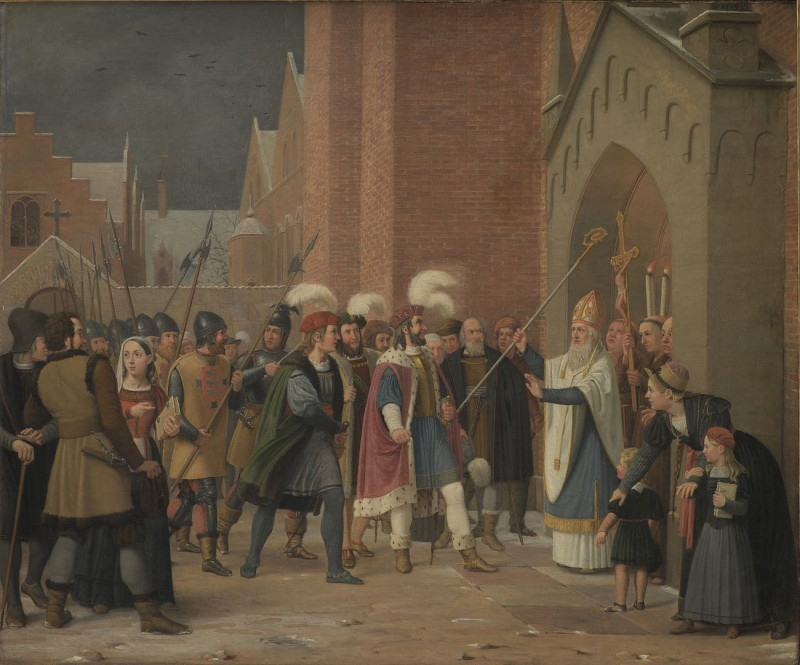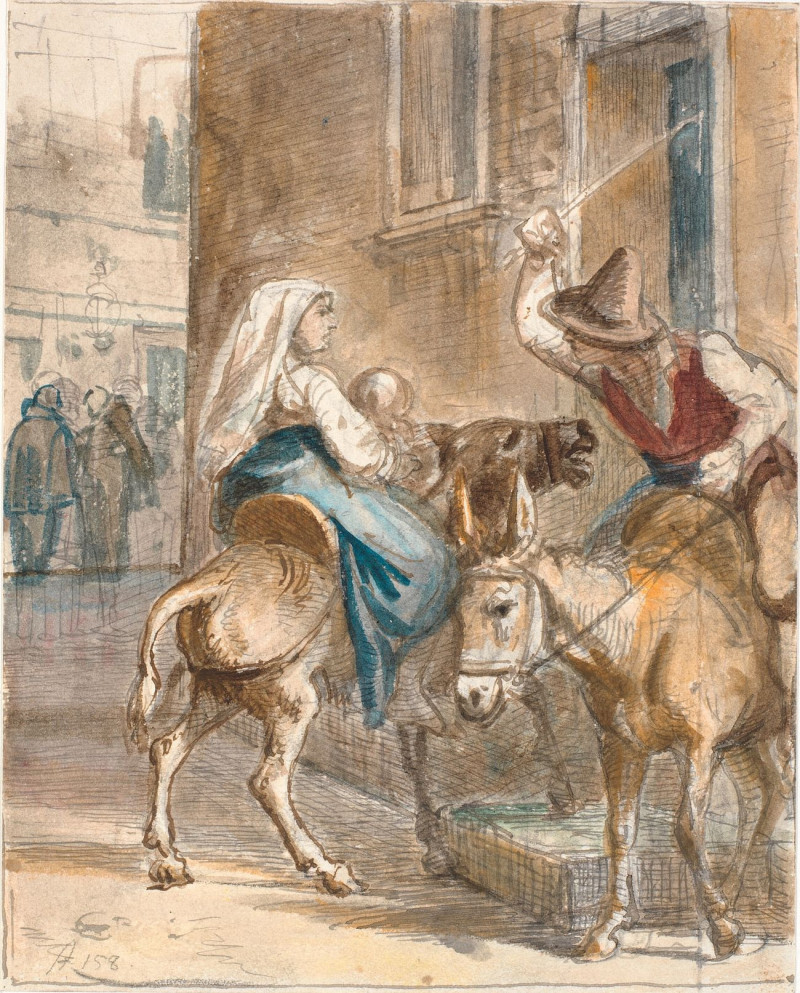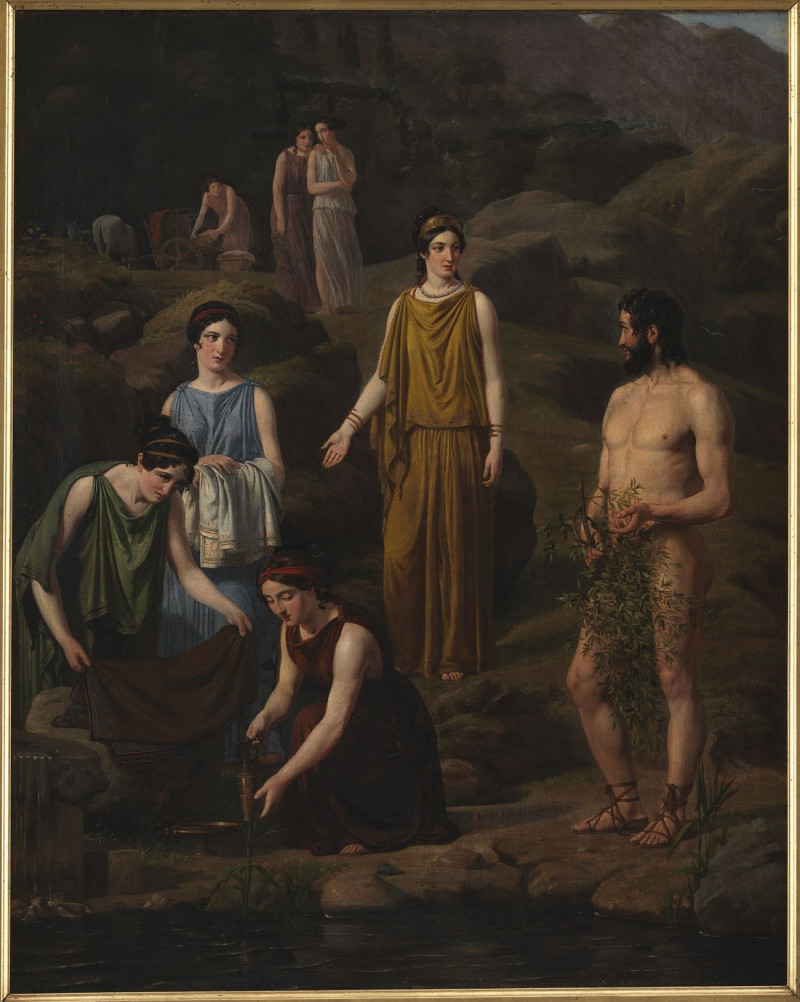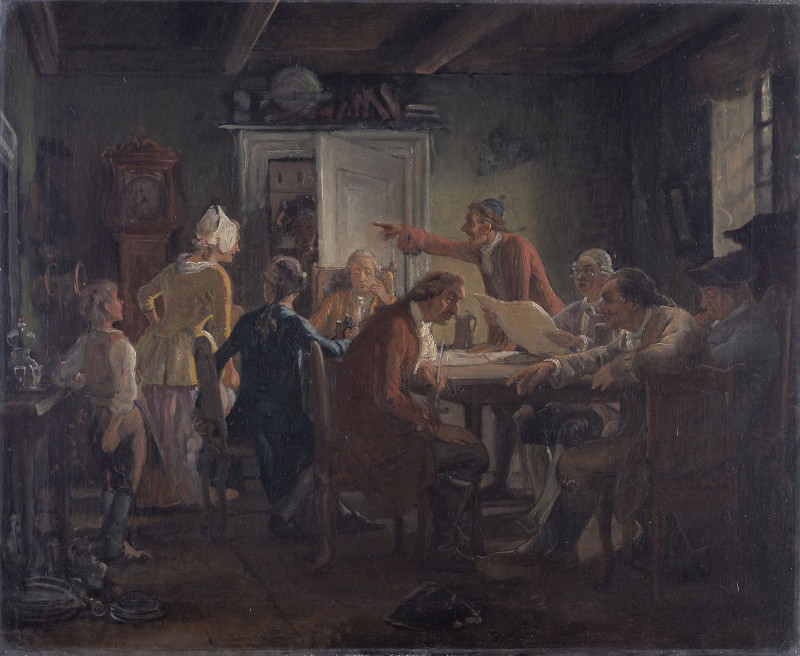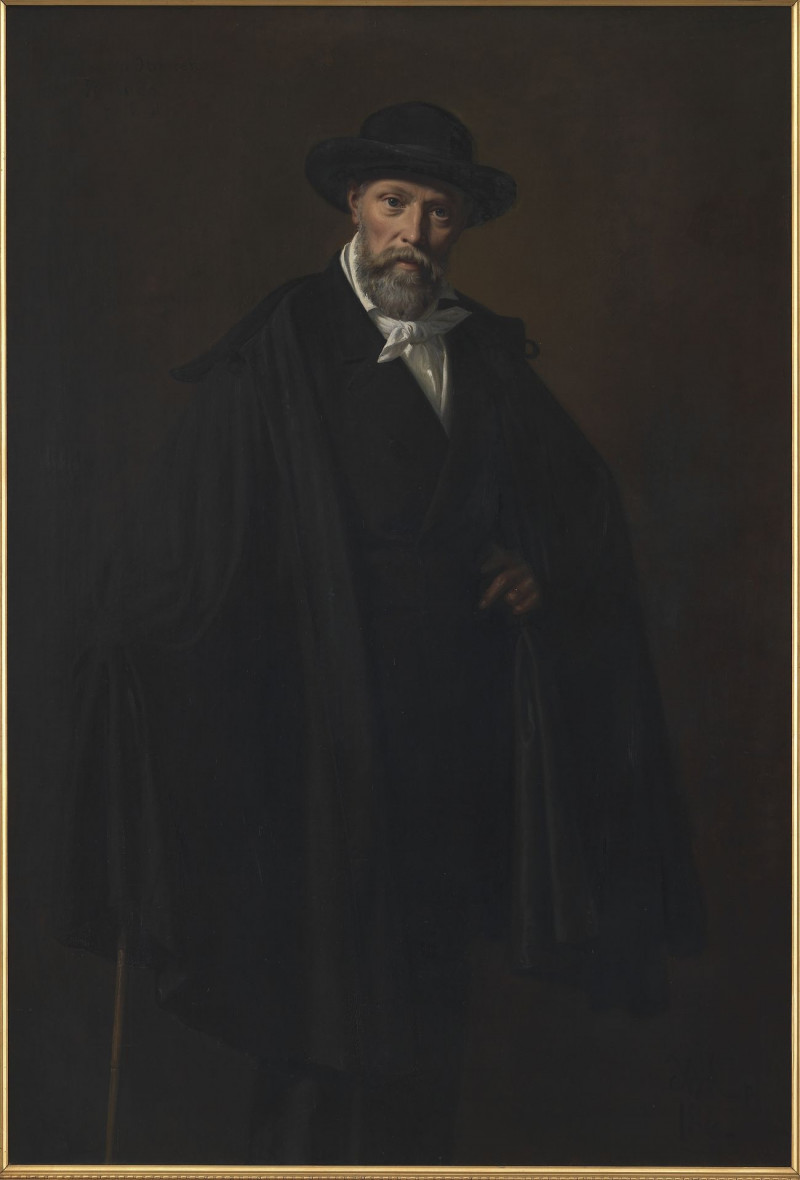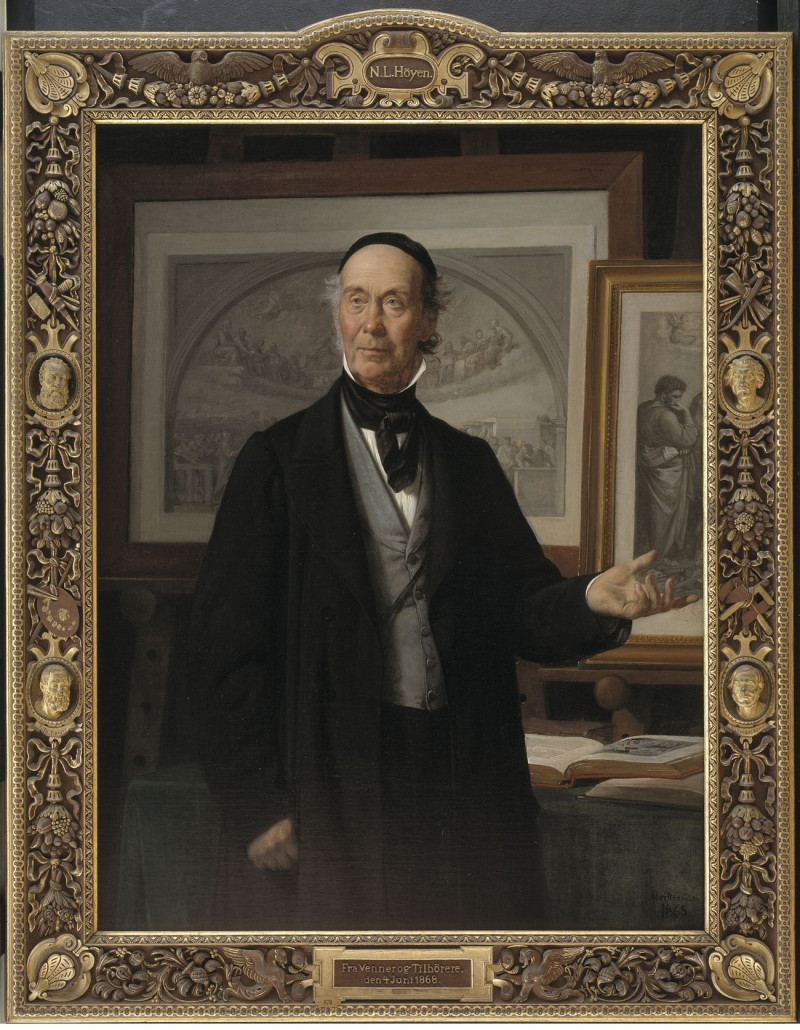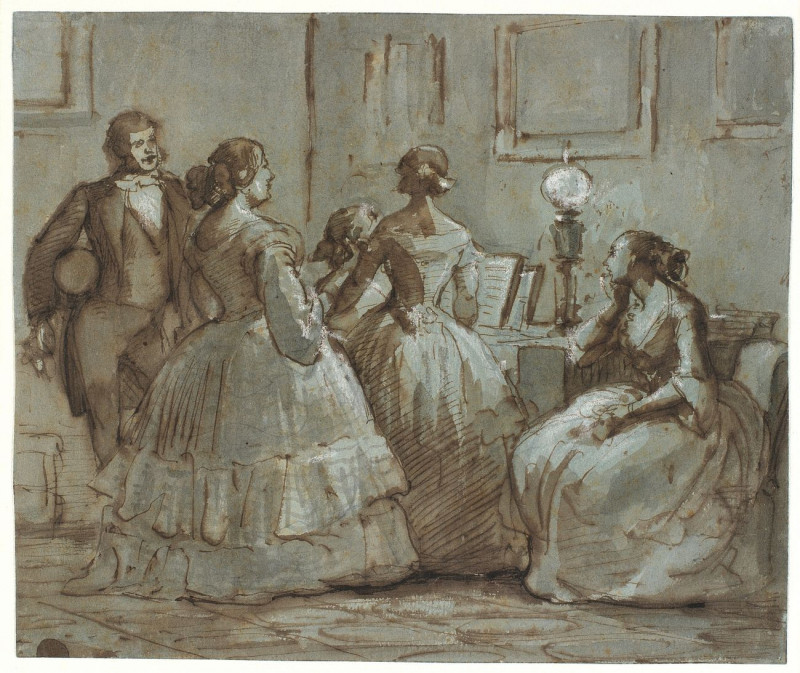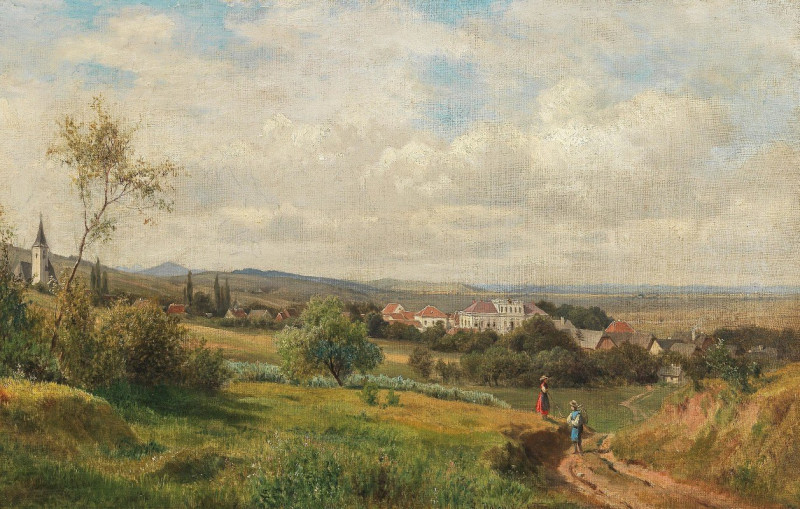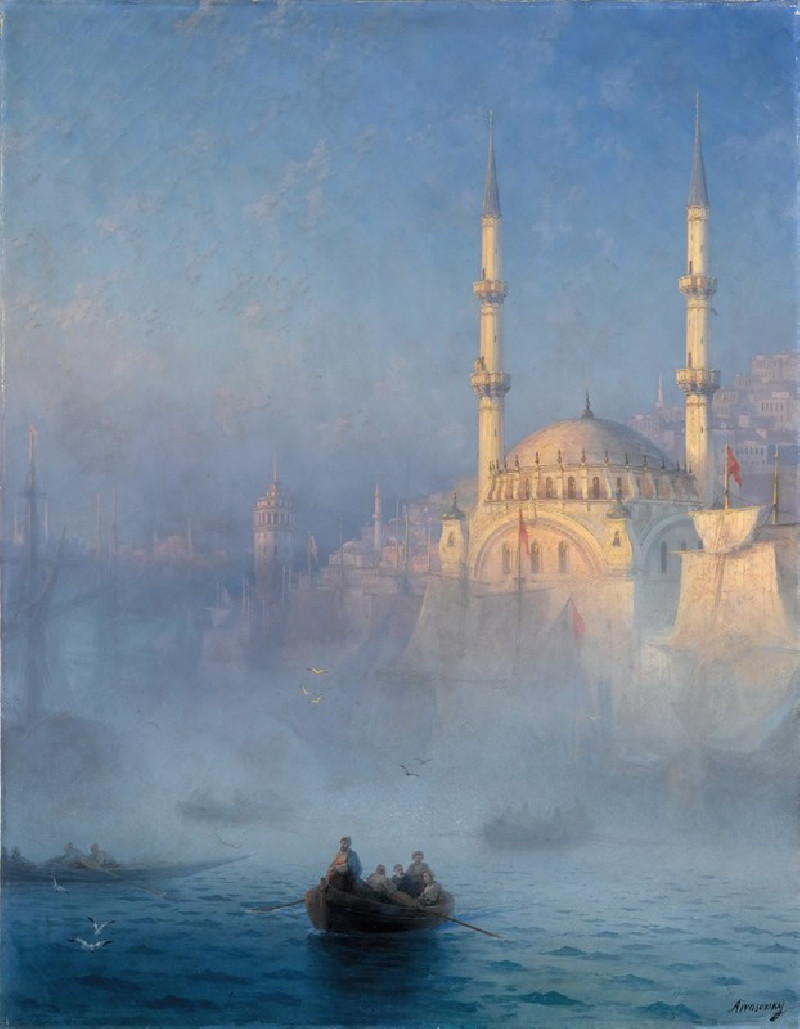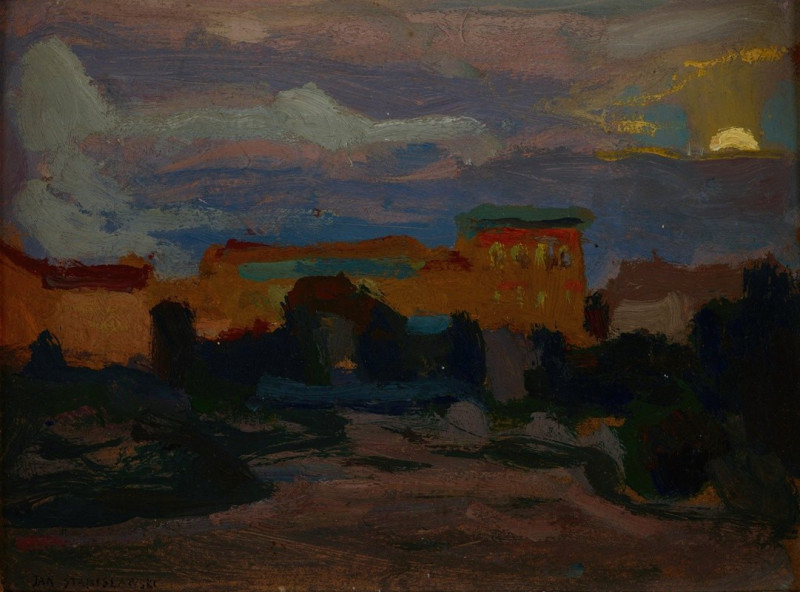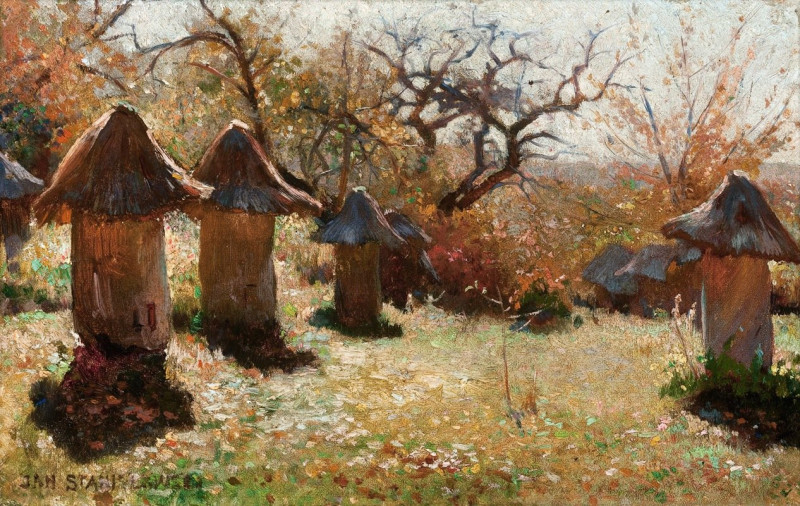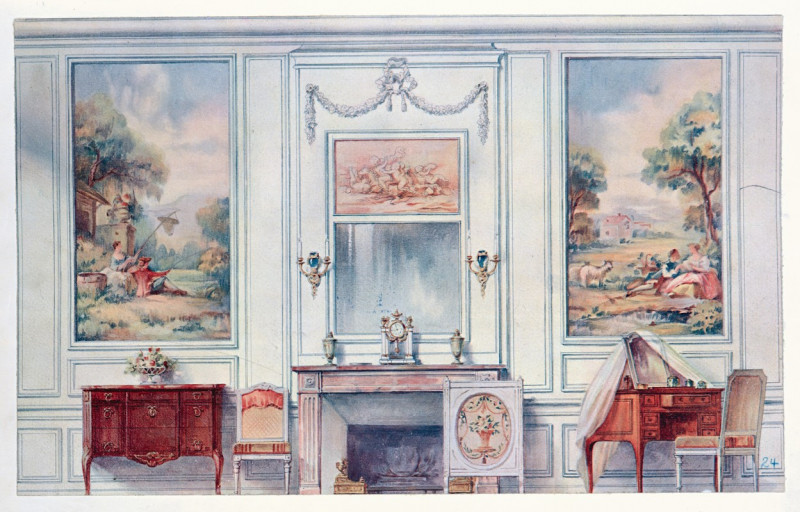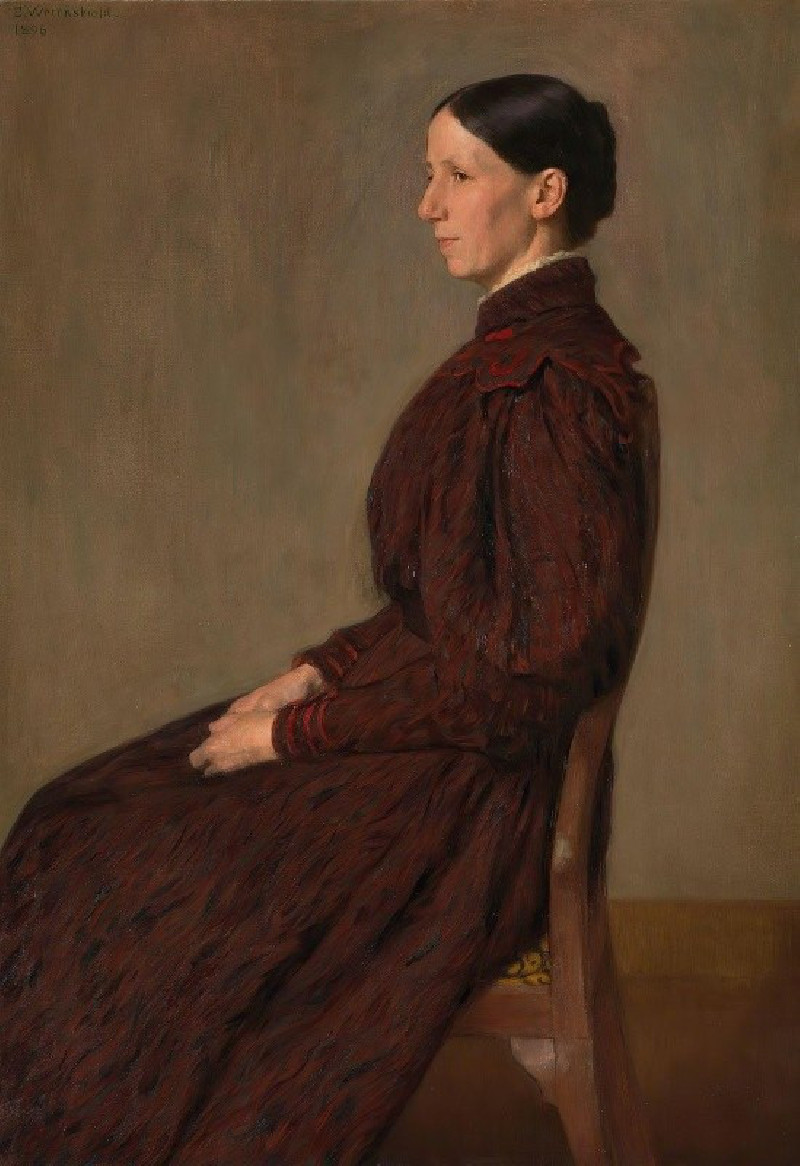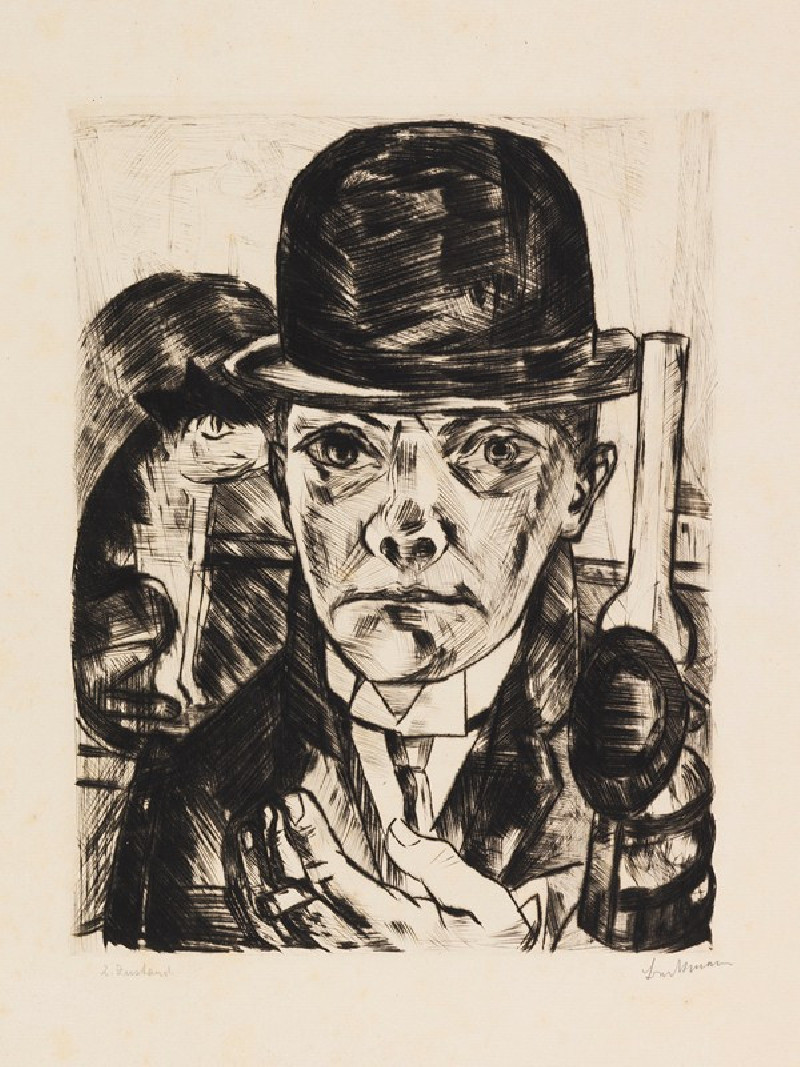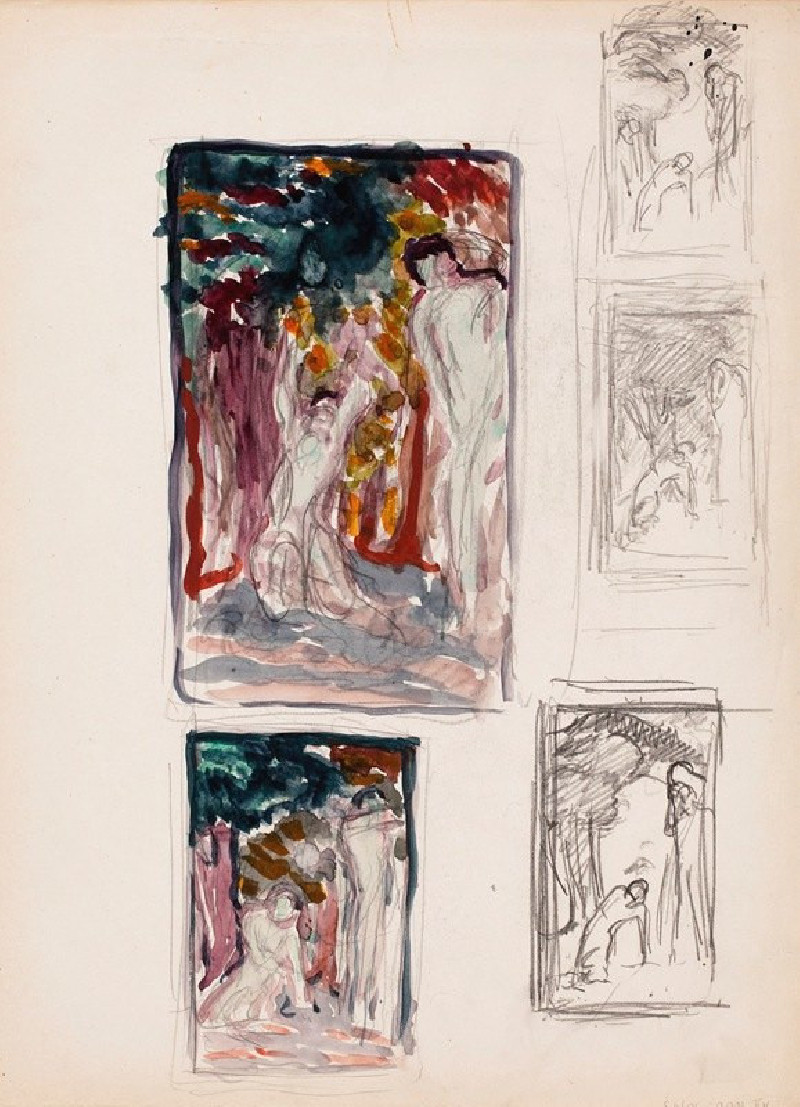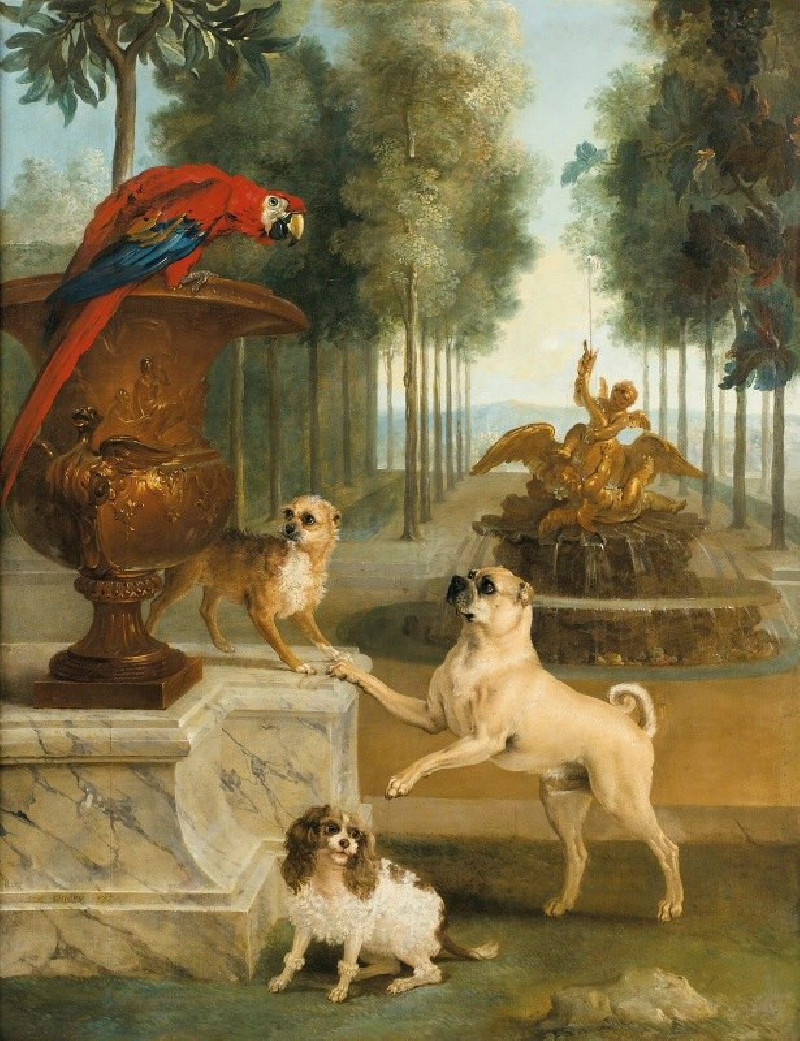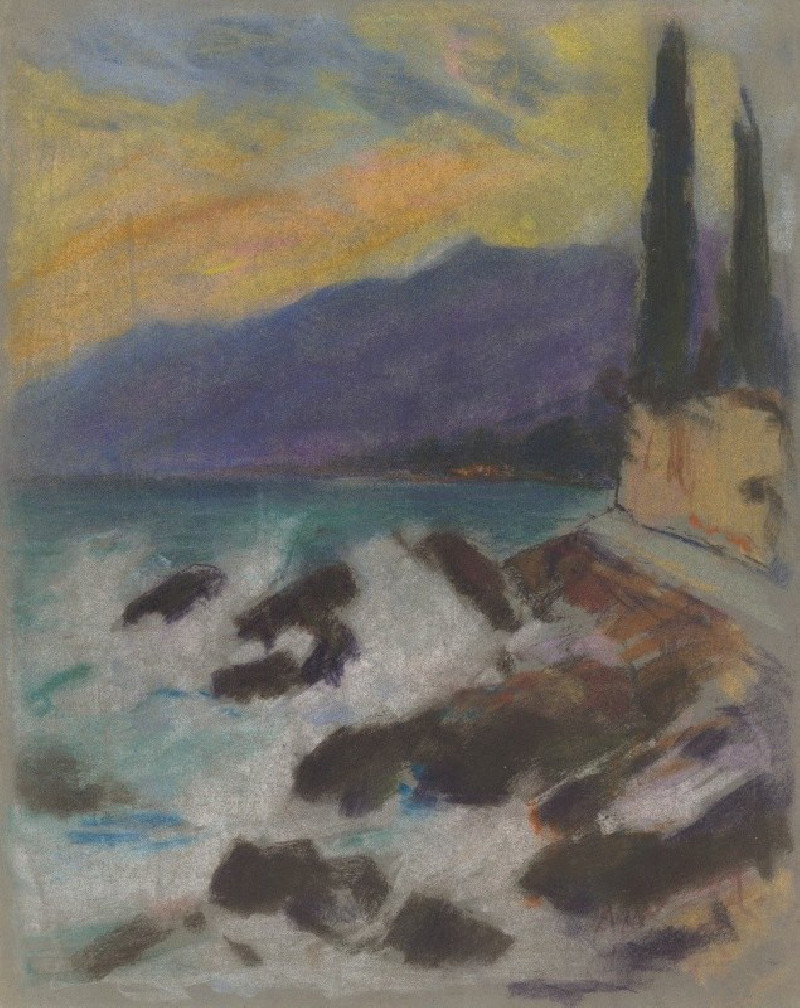Young Couple Disagreeing In The Background Dancing In Front Of A House
Technique: Giclée quality print
Recommended by our customers
More about this artwork
This painting by Wilhelm Marstrand, titled "Young Couple Disagreeing In The Background Dancing In Front Of A House," captures a striking and emotive scene rooted in everyday life yet enriched with a layer of narrative complexity. At the foreground, the painting depicts a young couple, their body language and expressions suggesting a moment of disagreement or discord. The young man, dressed in a hat and traditional attire with a sash and knee-length trousers, carries a somewhat perplexed or dismayed expression. He is turned slightly towards the young woman, who stands arms crossed and appears to be in a stern or reflective mood.The background contrasts this tense interaction with a scene of lively festivity. Several individuals can be seen dancing joyously in front of an old, large house. The setting implies a communal or celebratory event, possibly a local festivity or gathering, which adds a dynamic backdrop juxtaposed against the couple's quiet moment of personal conflict.The scene captures the complexity of human emotions and social settings, pointing to the idea that life's personal troubles often coexist alongside communal joy. Marstrand's use of soft, fluid brushstrokes and a controlled yet vibrant color palette helps convey the mood and atmosphere effectively, creating a vivid depiction of a moment in time within a community. This painting, as with much of Marstrand's work, offers a window into the societal and personal narratives of his time, rendered with technical skill and emotional depth.
Delivery
Returns
Depiction of middle-class family scenes and historical paintings by Danish Golden Age artist Wilhelm Marstrand (1810-1873). Marstrand was known for his depiction of middle-class family scenes and historical paintings, with a focus on genre painting and literary subjects. He was also a skilled portraitist, often commissioned by European families to create portraits. After spending time in Italy, Marstrand began to incorporate humorous and ironic elements into his narrative paintings and illustrations, offering a unique perspective on Italian folk life.

